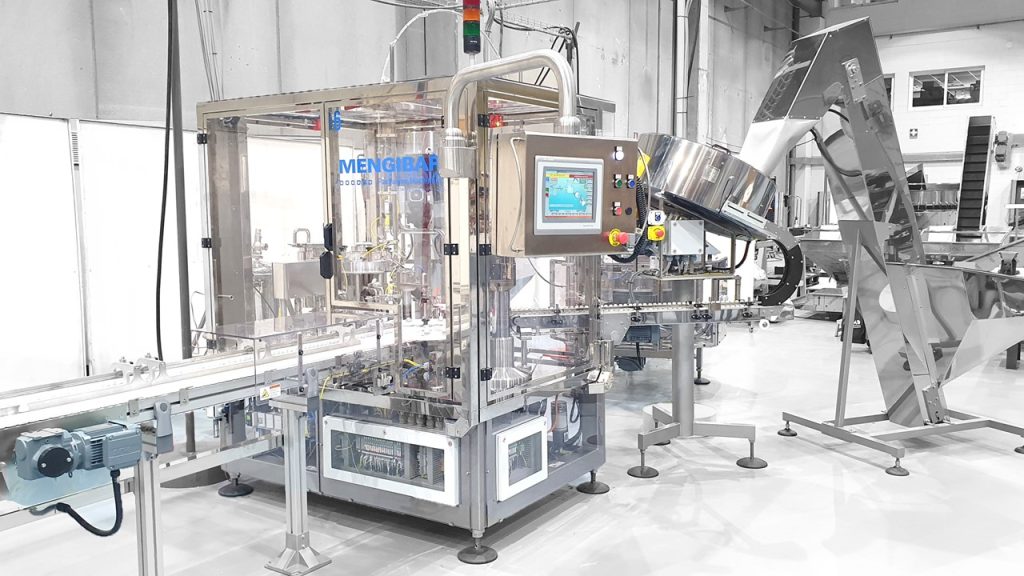In the first part of this article, we explored the early developments in filling technology, from manual methods to the initial automated machines such as gravity-fed, vacuum, piston, volumetric, and net weight-filling machines. These advancements set the stage for significant innovations in the 20th century.
In this second part, we will examine how filling technology has evolved over the last 30 years, driven by industry demands, regulatory changes, and consumer preferences.
1. Technological Advancements in the Late 20th and Early 21st Century
The late 20th century saw a surge in technological advancements across various industries, including filling technology. This period was characterized by the integration of electronics, computer systems, and robotics, leading to the development of more sophisticated and efficient filling machines.
Electronic Control Systems: The introduction of Programmable Logic Controllers (PLCs) revolutionized filling technology. PLCs enabled precise control over the filling process, allowing for greater accuracy, speed, and flexibility. Operators could program and adjust filling parameters with ease, leading to improved efficiency and reduced downtime.
- Magnetic Flowmeters: Magnetic flowmeters, operate based on Faraday’s Law of Electromagnetic Induction. They measure the flow rate of conductive liquids by generating a magnetic field around the flow tube and measuring the voltage generated by the fluid as it moves through the field. This filling technology offers high accuracy and is ideal for measuring the flow of liquids such as water, acids, and bases.
- Mass Flowmeters: Mass flowmeters, including Coriolis flowmeters, measure the mass flow rate of a fluid traveling through a tube. They work based on the Coriolis effect, where the motion of the fluid causes a detectable change in the vibration of the flow tubes. Mass flowmeters provide precise measurements of mass flow, density, and temperature, making them suitable for a wide range of applications, including the filling of high-value or viscous liquids.
Servo-Driven Filling Machines: Servo technology brought significant improvements in the precision and consistency of filling machines. Servo-driven systems allowed for exact control of the filling process, including the speed, volume, and timing of fills. This filling technology was particularly beneficial for industries requiring high precision, such as pharmaceuticals and cosmetics.
Multi-Head Filling Machines: To meet the increasing demand for higher production rates, multi-head filling machines were developed. These machines featured multiple filling heads that operated simultaneously, significantly increasing throughput. This innovation in filling technology was especially useful for large-scale beverage and food processing industries.
2. Compliance with Regulatory Standards
As industries grew and expanded globally, compliance with regulatory standards became a critical aspect of filling technology. Ensuring product safety, quality, and consistency was paramount, leading to several key advancements:
Clean-in-Place (CIP) Systems: To adhere to stringent hygiene standards, CIP systems were integrated into filling machines. CIP systems automated the cleaning and sanitization processes, ensuring that equipment was thoroughly cleaned without dismantling. This filling technology reduced the risk of contamination and improved overall operational efficiency.
Traceability and Serialization: Regulatory bodies in industries such as pharmaceuticals required traceability and serialization of products. Filling machines were equipped with systems to mark and track each product, ensuring compliance with regulations and facilitating product recalls if necessary.
3. Consumer-Driven Innovations
Consumer preferences and demands also played a significant role in shaping filling technology. The desire for convenience, sustainability, and product variety led to several notable developments:
Flexible Packaging Solutions: As consumers sought more convenient and eco-friendly packaging options, filling machines adapted to handle flexible packaging formats such as pouches and sachets. These machines provided precise fills for various product types, from liquids to powders, in a variety of packaging materials.
Customization and Versatility: Modern consumers appreciate product variety and customization. Filling machines evolved to offer greater versatility, capable of handling a wide range of products and packaging sizes. This flexibility in filling technology allowed manufacturers to quickly switch between different products and packaging formats, catering to diverse consumer preferences.
Sustainable Practices: The push for sustainability led to the development of filling machines that minimized waste and energy consumption. Innovations such as zero-waste fillers and energy-efficient systems helped manufacturers reduce their environmental footprint while maintaining high production standards.
4. Future Trends in Filling Technology
Looking ahead, filling technology is poised to continue evolving with advancements in automation, data analytics, and sustainability. Some emerging trends include:
Smart Filling Machines: The integration of Internet of Things (IoT) technology is transforming filling machines into smart systems. These machines can monitor performance in real-time, predict maintenance needs, and optimize operations for maximum efficiency.
Artificial Intelligence and Machine Learning: AI and machine learning are being leveraged to enhance the accuracy and efficiency of filling processes. These technologies can analyze data to identify patterns, optimize fill parameters, and reduce errors.
Sustainable Materials and Processes: The focus on sustainability will drive the development of filling machines that can handle new, eco-friendly packaging materials and utilize greener production processes.
Conclusion
The evolution of filling technology over the past 30 years has been remarkable, driven by technological advancements, regulatory requirements, and consumer demands. From the integration of electronic control systems to the development of flexible packaging solutions, the filling industry has continually adapted to meet the needs of a changing world. As we move forward, the focus on automation, data analytics, and sustainability will undoubtedly shape the future of filling technology, ensuring it remains at the forefront of innovation and efficiency.
